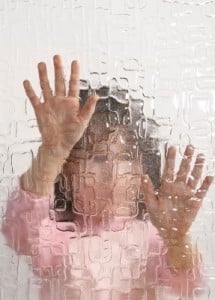
“Girls can be more adaptive than boys and can develop strategies that often mask what we traditionally think of as the signs of autism,” Carol Povey, Director of the National Autistic Society’s Centre for Autism told BBC UK. “This ‘masking’ can lead to a great deal of stress, and many girls go on to develop secondary problems such as anxiety, eating disorders or depression.”
But the solution to solving the issue with diagnosing girls may also be part of the problem. Because autism in boys is more prevalent, most of the research is male-based.
“Historically, research on autism has been largely informed by the experiences of men and boys with the condition,” Povey said.
And because of this, we may be missing out on figuring out how autism affects girls and why it affects them differently. Thankfully, the new study from the Autism Research Centre at the University of Cambridge may have just taken the first step to working through this problem.
Using magnetic resonance imaging (MRI) brain scans, scientists from the university studied the brains of 120 men and women, half of them with autism. They looked at the differences between the brains of typical males and those with autism and at the brains of typical females and those with autism. Then they compared the brains of males and females with autism to each other, and to those that did not have autism.
Males already have brains that look different because they have a higher volume of brain tissue. But the brains of females with autism “looked” more like (but still wasn’t the same as) healthy males when compared to healthy females. That similarity was not found in males with autism, however, so their brains did not show any “extreme” male characteristics.
Dr. Meng-Chuan Lai, who worked on the study, which was published in the journal Brain, says that this is the first step into better understanding that males and females with autism truly are different.
“What we have known about autism to date is mainly male-based,” Lai told BBC UK. “This research shows that it is possible that the effect of autism manifests differently according to one’s gender. Therefore we should not blindly assume that everything found for males or from male-predominant mixed samples will apply to females.”
He also says that future research may be needed to better examine both the differences and similarities in males and females with autism.
“There really needs to be more research and clinical attentions toward females on the spectrum,” he said.
Related Articles:
- Scientists Find Brain Differences between Autism and Asperger’s
- New Study on Motion Could Improve Therapies and Diagnosis for Children with Autism
- Brainwave Test for Diagnosing ADHD Approved by FDA






